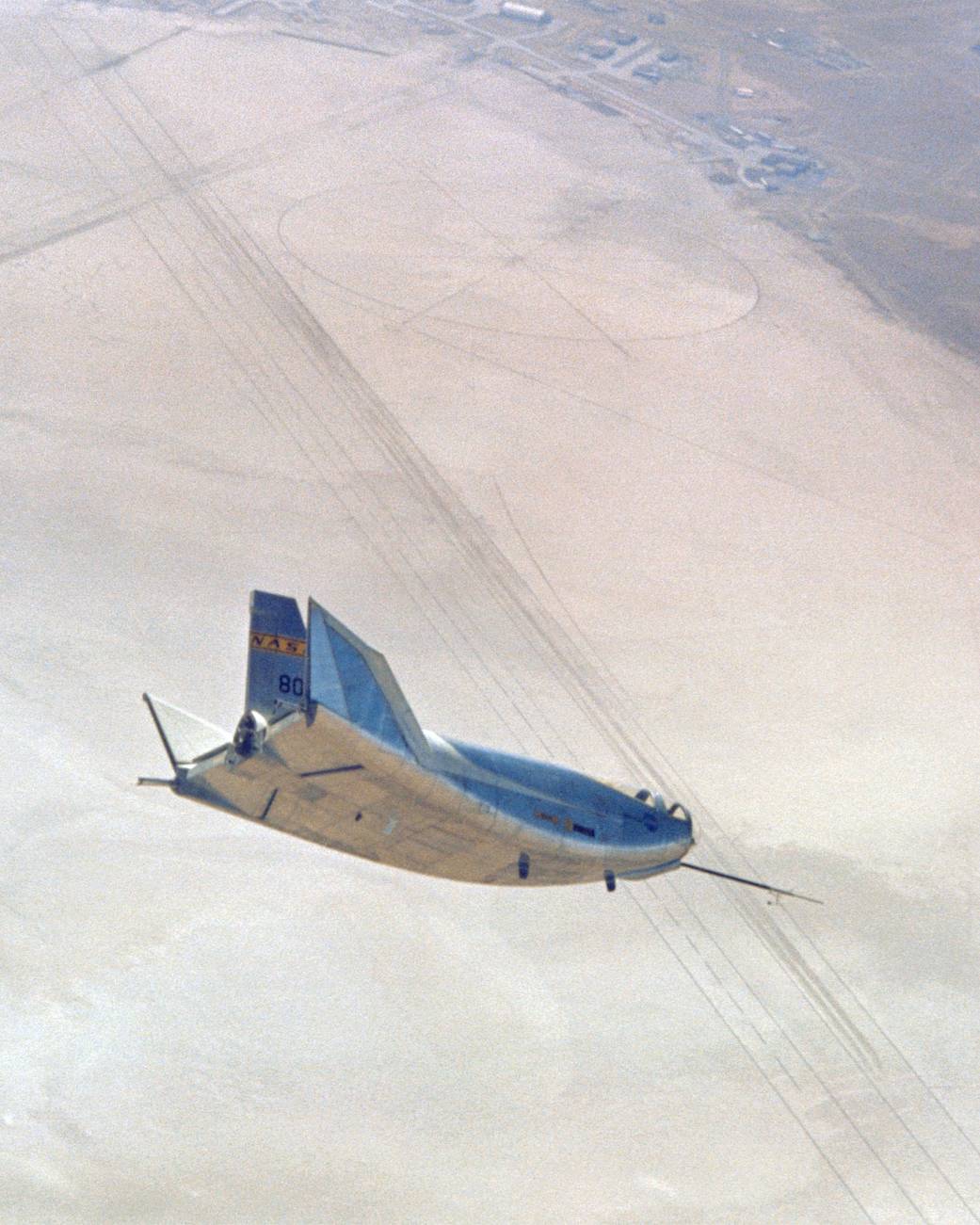The HL-10 was one of five aircraft built in the Lifting Body Research Program. It was a NASA design and was built to evaluate “inverted airfoil” lifting body and delta planform. It was flown 37 times during the lifting body research program and logged the highest altitude and fastest speed in the Lifting Body program
The other designs were the M2-F2, M2-F3 (rebuilt M2-F2 following a landing accident), X-24A, and X-24B (rebuilt X-24A with a different aerodynamic shape).
Wingless lifting bodies attained aerodynamic stability and lift from the shape of the vehicle. Lift resulted from more air pressure on the bottom of the body than on the top. They used energy and aerodynamic lift for in-flight maneuvering and a powerless, glider-like landing…Learn more
The HL-10 is currently on display at the entrance of Armstrong Flight Research Center at Edwards, CA.































